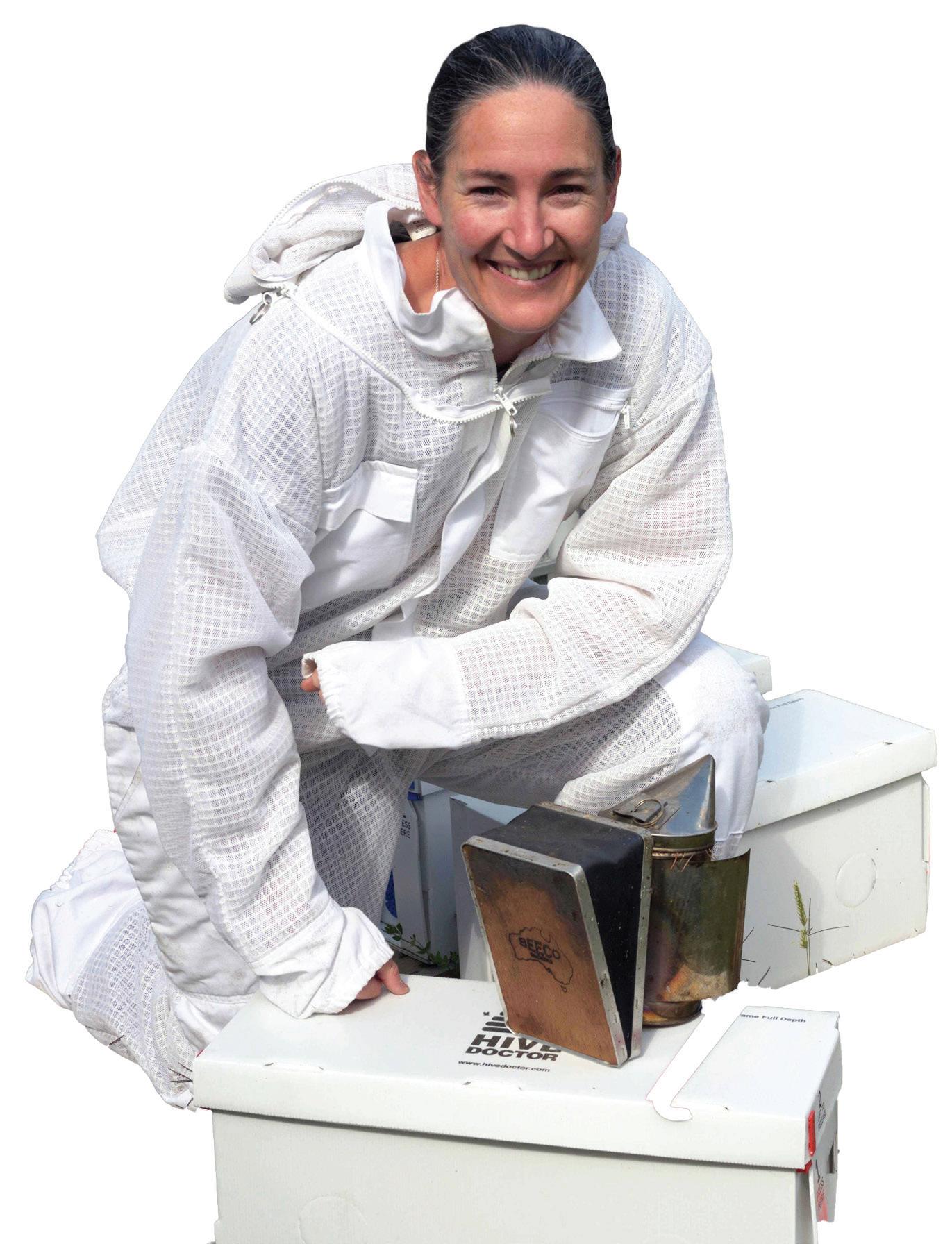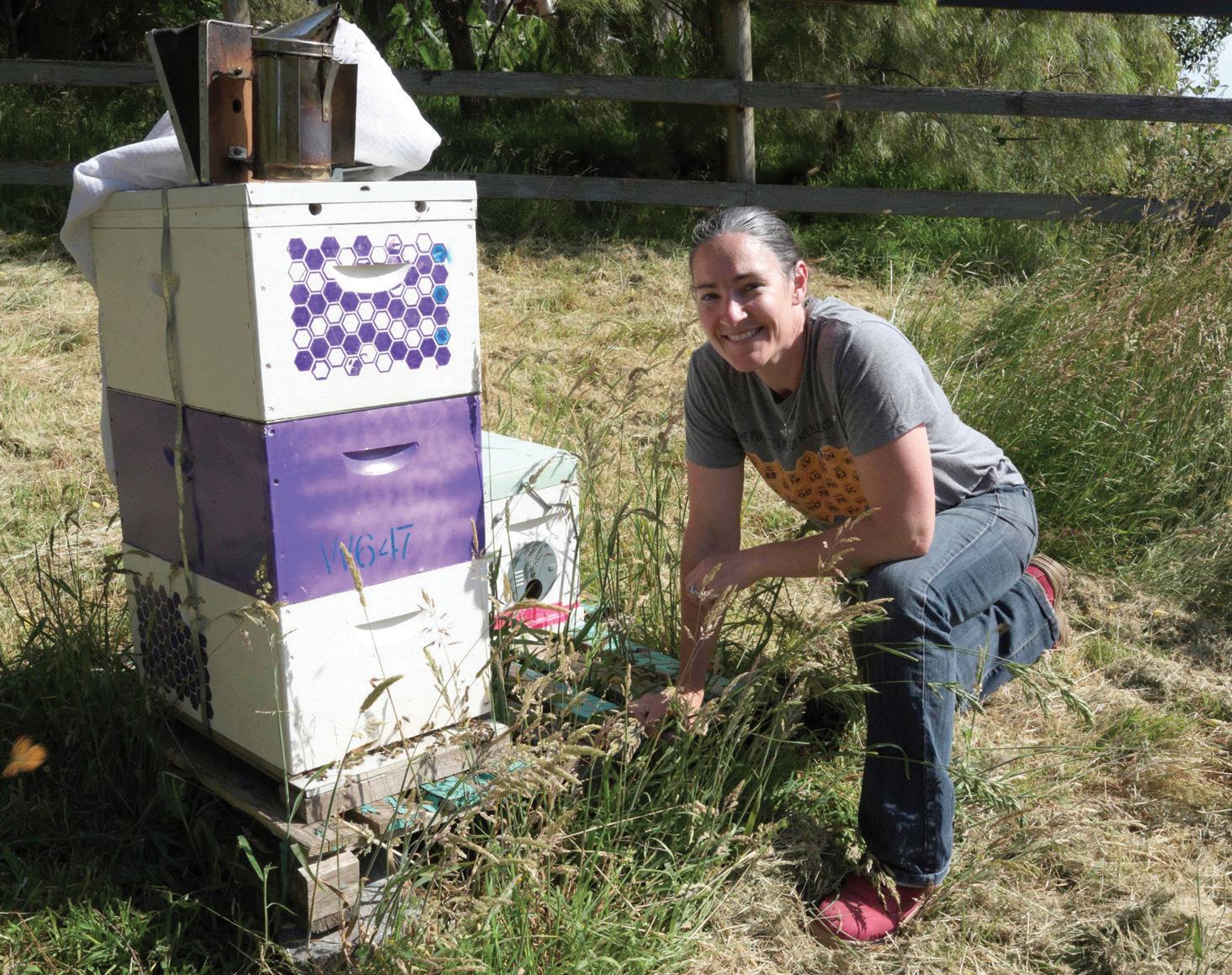
5 minute read
Bron Woods - Permaculture & Bees
BRON WOODS PERMACULTURE
AND BEES
By Anthony Kilner
There are 12 design principles around permaculture that essentially cover three key aspects of life: Earth Care, Fair Share and People Care. These principles are, from 1 to 12: Observe and interact, Catch and store energy, Obtain a yield, Apply self-regulation and accept feedback, Use and value renewable resources and services, Produce no waste, Design from pattern to details, Integrate rather than separate, Use small and slow solutions, Use and value diversity, Use edges and value the marginal and creativity use, and Respond to change.
Bron Woods applies these principles to her life. Mother of two Bron, has a Masters in Sustainability, is an educator and has a huge passion for bee keeping. In fact, she took over Bob’s Beekeeping in Watson’s Creek on the edge of the Yarra Valley in 2018. Permaculture is a very real thing in Bron’s life and she is working to set up her 25 acre farm adhering to its principles.
This interview really captures Bron’s way of life and how permaculture and bees go hand in hand.
There are 12 design principles in permaculture, and you have highlighted four of them to discuss. Can you explain the first principle of ‘Observe and Interact’?
“As bee keepers, if we don’t observe, we can’t expect to manage our bees successfully either for ourselves or for the bees. Observation is paramount. We need to observe what’s going on in the environment, and what’s going on inside and outside the hive, just as beekeepers have always done. “We are looking at the resources the bees are bringing in and what they are lacking; have they got nectar, have they got pollen, what the queen is doing, has she laid well since we had our last look inside, is she laying at all, what is she laying, is she laying healthy larvae or laying drone cells? Incidentally, drones aren’t a bad thing, it’s just another observation. By observing we are able to manage hive space and manage the hive structure we have decided on successfully. Always working respectfully toward the bees.”
The observing is really looking at everything and interacting accordingly in an appropriate manner?
“Absolutely, I think new beekeepers wonder what their bees are doing. Absolutely they do, but it’s not just about our bees. What is happening on the outside of the hive is just as important as what’s happening on the inside. So, we’ve just had five or so weeks of consistent heavy rain and I’ll go with the bud on our live gums. All the live buds, all the nectar was washed away, so unfortunately in Melbourne area, we’ve seen a lot of hives that have starved from not enough resources. Therefore, having ability to observe on both sides of the box is really important.”
The next principle you mentioned was ‘Obtain a Yield’.
“Looking at permaculture in general, what are we trying to get from our spaces? Whether it’s a large farm or a small backyard, generally we are seeing permaculture as a way of saving our lifestyles. We’re looking at predominately obtaining a yield of honey, and we can also obtain a yield of pollen, or Propolis - one of the many products that bees create that we can use. There are several main points to consider, however the question is; how do we take a yield of honey? Always, ethically, effectively and safely choosing the right hive and creating the right environment to obtain the products bees so naturally make.”
The sixth principle was ‘Produce no Waste’.
“If we look at our hives, they are traditionally just a wooden box and, in the last couple of years, we’ve seen people be quite creative by reusing materials to create boxes: creative ways from building and recycled products. It goes a step further in that anything that is created from the bees, we can use again. The wax that the bees produce we can use for lip balm, furniture polish and in home products. There’s never a wasted product in terms of what they create or for what they need to survive.”


The last principle you mentioned is number 7, Design from Patterns to Details’. I was intrigued as to how you’re going to explain that one?
“The pattern is generally the beautiful hexagon pattern the bees create and acknowledge that bees do that intrinsically. It is the same shaped cell; it doesn’t matter where you are in Australia, it doesn’t matter where you are in the world, the Apis mellifera European honey bee makes that hexagon. They make a couple of different sizes and, depending on whether they are creating brood or babies, boys or girls, the proportions, the shape is the same. It’s spectacular! To be able to do that naturally I think is pretty awesome.”
That’s four of those 12 principles, are those 12 design principles a standard thing in permaculture?
“They are the 12. If you’re working anywhere in the world, they are the 12 design principles that you use. There are the three elements as well. I think beekeeping is those three. We’re caring for our earth and we’re caring for our people, because the majority of beekeepers don’t do it for money. Most hobbyists do beekeeping linked with other mentors or go into it with another person. They’re at the start of their journey together and anytime we learn something new, we share it - we are caring for each other.
“I think the fair share is simple. I don’t know of any beekeepers that haven’t given away their honey at one time or another. Maybe that’s just what they do or maybe they sell it. Either way, it’s an intrinsic part of bee keeping - they’re so proud of this product they helped create, they want to share it with others!”
Bron run’s Bob’s Beekeeping Supplies and has a wealth of knowledge and experience with all things bees. It’s BEEn an absolute pleasure dealing with her on this topic.
Anthony is available for 1:1 Readings and Bridging Realms Core Issue Vibrational Healing™ sessions.
Image Credit: Anthony Kilner










